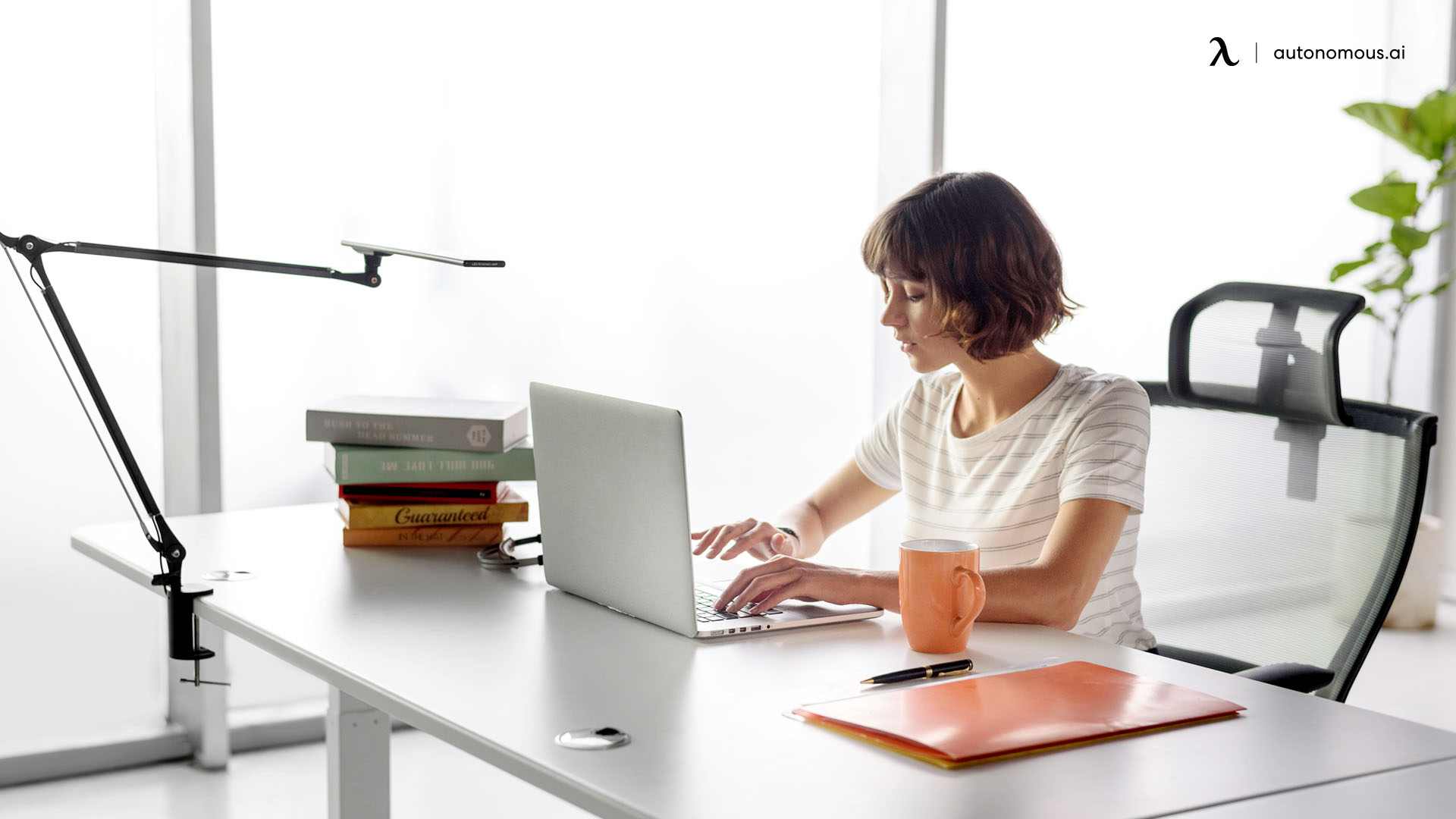
Table of Contents
Workplace stress and anxiety are commonplace in today’s fast-paced and demanding work environment. Our health can suffer when we’re anxious about things like approaching deadlines, difficult assignments, or the expectation that we have to perform to a high standard. But there’s a simple technique that we frequently fail to use: our breath.
If you suffer from anxiety on the job, this article will teach you some breathing exercises for anxiety that will assist you. You may subtly include these exercises into your work routine to provide relief from stress and a pathway to a calmer, more focused mind.
How We Breathe Matter
Breaths that cause your chest to rise and fall are considered less than ideal. Many people breathe shallowly and quickly from their chest rather than their stomach as a result of chronic bad posture and excessive stress.
When we're at ease, our breath becomes deeper and more abdominal in origin. One way to manage stress and its effects on your body and mind is to practice deep, relaxing breathing exercises. Breathing exercises are effective because they teach us to inhale deeply, which increases our lung capacity to take in oxygen and send it throughout our bodies.
The Price of Workplace Stress
According to research from the National Institute for Occupational Safety and Health (NIOSH), 25% of workers say their jobs are the most stressful part of their lives.
Workplace stress is associated with more health problems than any other factor in people’s lives. Even worse, stress can cause serious health problems like heart disease, back pain, musculoskeletal illnesses, and mental health concerns if it lasts for a long time.
There are further repercussions of stress at work:
- Healthcare costs are fifty percent higher for employees who report high levels of stress.
- People who work under a lot of stress are less efficient.
- People who work under stress are more prone to leave their jobs.
An annual cost of nearly $300 billion is attributed to stress in the United States corporate sector. Given the high risks and high expenses, companies must prioritize strategies to promote stress reduction and reduce burnout.

5 Helpful Breathing Exercises for Anxiety
1. Alternate Nostril Breathing
The meditation breathing exercise known as NadiShodhana is a popular method for relieving stress. As one of the most effective breathing exercises for anxiety, this technique has the potential to alleviate mental and physical imbalances, sharpen concentration, and decrease overall stress levels.
In alternate nostril breathing, you do what the name suggests: you take breaths in and out of each nostril in turn. To practice nasal breathing, close one nostril and inhale and expel through it for a full breath. The process is as follows:
- Maintain a comfortable posture while sitting up straight and put your right thumb over your right nostril to close it.
- Exhale slowly from your left nostril after inhaling slowly.
- Release your thumb from the right nostril as you close the left nostril.
- Using your right nostril, breathe in and out.
- Repeat this exercise 5 to 10 times.
2. Mindfulness Breathing/Meditation
Compared to the others, this breathing exercise has stronger ties to meditation. The process is as follows:
- Relax into a comfortable position, close your eyes, and breathe normally.
- Remind yourself to count to one as you exhale.
- Next time you exhale, count to two.
- Repeat this pattern until you reach the number 5, and then begin again at 1.
- Keep doing it for about five minutes.
If your mind wanders, gently bring your focus back to your breath and counting. Practicing mindfulness like this can easily fit into daily life — whether you have a quiet meditation shed in your backyard or simply use a supportive meditation chair.
You can also adapt this as a desk meditation during short breaks, or explore practices like Metta meditation and mantra meditation to deepen your breathing routine.
3. Belly Breathing
If you suffer from anxiety, this technique can assist. To make sure you’re not simply breathing into your upper lungs, you can achieve deeper breaths by stretching your belly. Here’s how you can do this exercise:
- Put your palm on your tummy, just below the navel.
- Inhale deeply and exhale slowly, expanding your belly so that your palm rests on your abdomen and your breath rises and falls with it.
- As you breathe out, let your belly loosen.
- Do this for five breaths.
This exercise pairs well with gentle movement. Simple chair exercises for belly fat or light chair leg exercises can help release physical tension and make your breathing flow more naturally.
4. 4-7-8 Breathing
Quickly relaxing your nervous system is possible with the help of this calming breathing exercise developed by Andrew Weil, M.D., director of the Andrew Weil Center for Integrative Medicine at the University of Arizona.
As per Dr. Weil's instructions, here is how to do the 4-7-8 breathing:
- Put your palms facing outward and your fingers crossed on your chest.
- Breathe in slowly and deeply from your abdomen for four counts.
- Then hold your breath till the count of seven.
- Exhale out all the air at the count of eight.
- Repeat this process three to seven times until you achieve a state of serenity.
Before getting back to your day, relax for a while and pay attention to how your body and mind are feeling after this relaxing breathing exercise.
5. The Humming Breath
Bhramari pranayama, also known as the humming breath, is a method for relieving stress through the use of vibration and breath. While the breath stimulates the parasympathetic nervous system and tones the vagus nerve, the vibrations in this stress-breathing exercise serve to balance out the body's hyperactive systems. Any time of day is perfect for this exercise.
Sattar suggests the following method for performing the humming breath:
- Settle into a comfy chair or stand tall and straight.
- Take five deep breaths in through your nose.
- Humm till you can’t take any more breaths, pretending to utter “hmm” with your lips closed.
- Repeat this five to seven times.
Tips to Make It a Daily Habit
Breathing exercises only work if you actually use them. The good news is, you don’t need a long routine — just a few mindful minutes each day can help keep stress in check. Here are a few simple ways to make it stick:
- Stack it with daily habits: Pair your breathing practice with something you already do, like making coffee, sitting at your desk, or winding down your evening.
- Keep it short: A 2-minute breathing exercise for stress reduction can be just as powerful as a long session when practiced regularly.
- Set gentle reminders: A calendar ping or phone alert can help make this a natural part of your routine.
- Use your environment: Try quick breathing exercises for anxiety before meetings, during brain breaks, or while waiting for your computer to load.
- Combine it with movement: Pairing breathing with active sitting or light work at home exercises can help your body relax more naturally.
- Honor your breaks: Use short pauses to reset with breath. Even taking breaks at work can become a natural moment to slow down and breathe.
- Create a calming cue: A specific chair, corner of the room, or even a scent can signal your brain that it’s time to relax.
These small, intentional habits make breathing techniques for anxiety and stress part of your daily rhythm — not another task on your to-do list.

FAQs
Do breathing exercises help with anxiety?
Yes. Breathing exercises for anxiety and stress can calm your nervous system, lower heart rate, and ease muscle tension. Just a few minutes of deep breathing can reduce anxiety symptoms and help you feel more centered.
How long should you do breathing exercises for anxiety?
You can benefit from as little as a 2-minute breathing exercise for stress reduction. For deeper relaxation, 5- to 10-minute breathing sessions work best, especially when practiced consistently.
What are the best breathing exercises for anxiety and stress?
Popular breathing techniques for anxiety and stress include 4-7-8 breathing, alternate nostril breathing, and belly breathing. These methods help regulate your breath, promote calm, and reduce physical signs of stress.
Can deep breathing exercises help with anxiety and depression?
Yes. Deep breathing exercises for stress and anxiety can also ease mild symptoms of depression by improving oxygen flow, relaxing your body, and shifting your focus away from racing thoughts.
What is a simple breathing exercise I can do at work?
A quick breathing exercise for anxiety is box breathing. Inhale for 4 seconds, hold for 4, exhale for 4, and hold again for 4. This easy breathing technique can be done at your desk without anyone noticing.
How often should I practice breathing exercises for stress relief?
Practicing breathing exercises two or three times a day can make a big difference. Even a short 2-minute breathing break between tasks can lower stress levels at work.
Are yoga breathing exercises effective for anxiety?
Yes. Yoga breathing exercises for anxiety, such as alternate nostril breathing and humming breath, stimulate the parasympathetic nervous system. This helps reduce stress and promote a sense of calm.
Can breathing techniques help during a panic attack?
Controlled breathing techniques can help bring your focus back to the present and reduce panic symptoms. Slow, steady breaths signal your brain that you’re safe, easing the intensity of the episode.
What’s a good 5-minute breathing exercise for anxiety?
Try the 4-7-8 method: inhale for 4 seconds, hold for 7, and exhale for 8. This 5-minute breathing exercise for anxiety can quickly slow your heart rate and relax your body.
Can breathing exercises reduce workplace stress?
Yes. Breathing exercises for stress at work are one of the fastest ways to reset your mind. A few mindful breaths during breaks or before meetings can improve focus and reduce tension.

Conclusion
When you use one of these breathing exercises for anxiety, you'll notice an immediate improvement in your mood.
Getting away from stress can be as easy but there are other ways to alleviate stress as well. No matter where you are, breathing methods are a tool you can readily control.
Recognizing stress-related issues and assisting people in finding strategies to reduce stress at work is crucial. Anyone can benefit from breathing exercises for stress, and they also don't require any particular skills or knowledge to do so.
Spread the word
.svg)




(1).webp)



